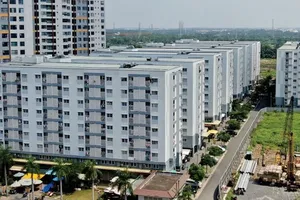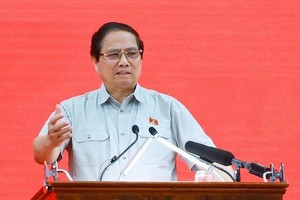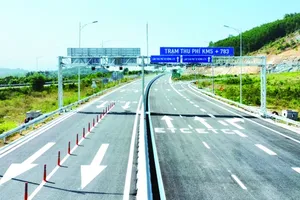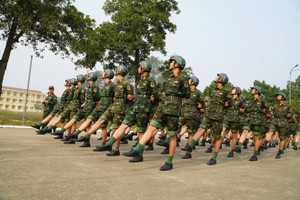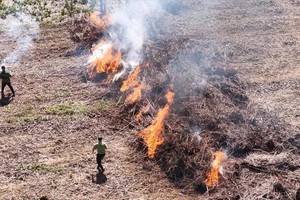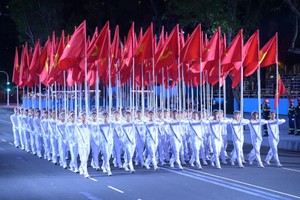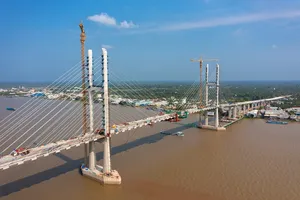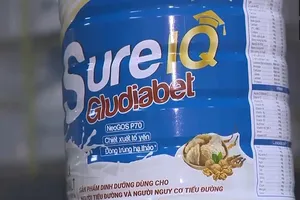Nguyen Ngoc Diep, Chairman of the Vietnam Water Supply and Sewerage Association (VWSA), reveals that water suppliers are categorized into two groups: one comprising companies that run water distribution systems and the other including those that operate water treatment plants.
 |
| A water treatment plant in Quang Binh province, which has been built with an initial outlay of 193 billion VND and supplies clean water to nearly 90,000 people. (Photo: VNA) |
Companies in the first group fall under the management of provincial authorities, thereby having a monopoly on water distribution. Their performance depends solely on the water loss ratios of their systems and the population density of their localities.
Those companies, according to the securities firm SSI, are forecast to have their revenues increase by 8 percent this year, supported by a 6 percent rise in total water consumption and a 3 percent rise in water prices.
For companies of the second group, VWSA estimates the total capacity of their water treatment plants at about 11.5 million cu.m per day, against the total consumption of around 8.6 million cu.m per day in 2023, up 6 percent year-by-year. SSI forecast that water usage would continue to rise by 12 percent annually in Hanoi between 2025 and 2030 and about 8 percent in HCMC during the period, adding to water suppliers' revenues.
Meanwhile, water suppliers are operating more efficiently thanks to regular system upgrades and the installation of advanced water leak detectors. On such a ground, water loss ratios are expected to fall to 16.5 percent this year, from 17.5 percent in 2022, raising their profit margin by 1.1 percent.
SSI also forecast that water prices would climb by around 5 percent in Hanoi and HCMC, and by 3 percent in Binh Dinh province this year. However, the prices would remain unchanged in Hai Phong city and Dong Nai province. Additionally, price rises would be more evident in industrial parks as a result of the growing demand for basic utilities among FDI investors.
The securities firm VCSC shares this view, saying that water consumption would soar in Binh Duong province as several new industrial parks are expected to come into operation between 2022 and 2025.
Two of the industrial parks are the Industrial Park VSIP III at Tan Uyen district and Cay Truong Industrial Park in Bau Bang district, which covers an area of 1,000ha each and are expected to give a huge boost to water prices in the province. SSI believes that M&A activities in 2022 among water suppliers would add to their operational success this year, allowing them to outperform the market's average growth.
For instance, Binh Duong Water Environment JSC took over Can Tho Water Supply - Sewerage JSC and Gia Tan Water Plant to expand its water distribution systems to rural areas in the two provinces, significantly improving its market reach. However, good news goes only as far.
SSI is concerned that the enactment of the Law on Water Resources and Environment in 2023 would incur higher costs to water suppliers because the environmental taxes imposed on them will be recalibrated from capacity-based to output-based taxes.
Such a rise in the environmental taxes would, under SSI estimation, reduce their profit margins by between 0.2 to 0.4 percent. Fortunately, these slight drops in profits would be overwhelmed by the rise in revenues and water prices, resulting in strong positive growth eventually.
According to the Ministry of Construction, Vietnam had 750 water plants in 2022 with an aggregate capacity of 11.2 million c.m per day. On the demand side, household consumption rose by 5 percent year-by-year and industrial consumption by about 8 percent, against an annual rise of 3 percent in water prices.


